HIV/AIDS
Turning the tide against AIDS will require more concentrated focus on adolescents and young people
Adolescents and young people represent a growing share of people living with HIV worldwide. In 2020 alone, 410,000 [194,000-690,000] young people between the ages of 10 to 24 were newly infected with HIV, of whom 150,000 [44,000-310,000] were adolescents between the ages of 10 and 19. To compound this, most recent data indicate that only 25 per cent of adolescent girls and 17 per cent of adolescent boys aged 15-19 in Eastern and Southern Africa – the region most affected by HIV – have been tested for HIV in the past 12 months and received the result of the last test. The testing rates in West and Central Africa and South Asia are even lower. If current trends continue, hundreds of thousands more will become HIV-positive in the coming years, and without knowing their status, adolescents will miss out on life-saving treatment. Additionally, a large population of children infected with HIV perinatally over the last decade are growing into adolescence.
In 2015, UNICEF and UNAIDS, in partnership with other international health and development partners, launched ALL IN! to End Adolescent AIDS. This global initiative established 2020 targets towards ending the AIDS epidemic among adolescents by 2030. To achieve this, it is critical to accelerate efforts to address the epidemic among adolescents.
HIV in adolescents
In 2020, about 1.75 million [1.16 million-2.3 million] adolescents between the ages of 10 and 19 were living with HIV worldwide. Adolescents account for about 5 per cent of all people living with HIV and about 11 per cent of new adult HIV infections. About 1.5 million [1.0 million-2.1 million] (88 per cent) live in sub-Saharan Africa. Outside of sub-Saharan Africa, the highest numbers of HIV-positive adolescents are in Asia and Latin America.
Globally, in 2020, adolescent girls accounted for three quarters of all new HIV infections among adolescents. Among the 35 HIV priority countries in the UNICEF Strategic Plan, this proportion was even higher with adolescent girls accounting for four fifths of all new HIV infections among adolescents. In sub-Saharan Africa that year, almost six times as many adolescent girls were newly infected with HIV than adolescent boys. In East Asia and the Pacific, more boys are newly infected with HIV each year than girls in adolescence. This reflects differences in risk behaviour in these regions, which means that interventions must be tailored to the specific nature and dynamic of the epidemic.
In some sub-Saharan countries, adolescent girls are two to three times more likely to be infected with HIV than boys of the same age group. However, HIV does not only affect sub-Saharan Africa, and in 2020, 18 per cent of adolescents newly infected with HIV lived outside of the region.
Progress in reducing new HIV infections among adolescents
Globally, new HIV infections among adolescents have decreased by one-third since 2010. However, progress remains slower than the impressive progress for new HIV infections among younger children (which has decreased by one half since 2010). However, HIV prevention programmes for adolescents has been more successful in some regions than others. In Eastern and Southern Africa, new infections in this age group has decreased by 41 per cent, while in Middle East and North Africa, infections have increased by 4 per cent over the same period.
Interventions for HIV prevention among adolescents
According to UNAIDS estimates, HIV incidence has fallen in many of the most severely affected countries because adolescents and young people are adopting safer sexual practices and more people living with HIV are accessing treatment to lower their viral load. However, in regions with available data, recent testing coverage remains below 20 per cent for adolescents. This means many adolescents and young people living with HIV may not know their status. Furthermore, boys are consistently less likely to have been tested for HIV compared to girls.
In countries with generalized epidemics, schools can be a critical venue for reaching adolescents with the information and skills they need to avoid HIV infection. Evidence shows that school-based sex education can be effective in changing the knowledge, attitudes and practices that lead to risky sexual behaviour.
Preventing HIV in countries with low prevalence or where the epidemic is concentrated in specific populations is especially challenging since the spread of the virus is fuelled by high-risk, often stigmatized behaviour. People who engage in such behaviour tend to be young and include sex workers, people who inject drugs and men who have sex with men.
No matter the epidemic, it is imperative that adolescents possess comprehensive and correct knowledge of HIV prevention in order to protect themselves from infection. However, rates of comprehensive knowledge remain below 50 per cent in most countries with available data. In addition, girls and boys may have disparate levels of HIV knowledge depending on the country context.
Antiretroviral treatment among adolescents
According to WHO and UNAIDS, HIV among children and adolescents presents unique features that affect how diagnosis, treatment and care is provided across the age continuum of 0–19 years. Optimal antiretroviral drug regimens may require changes as children age and grow. Countries need to adapt and tailor service delivery between younger adolescents (10–14 years old) and older adolescents (15–19 years old) due to significant differences in health-seeking behaviour, number of adolescents acquiring HIV infection and health outcomes including AIDS-related causes. Further, models of care to retain children and adolescents in treatment and ensure that they have suppressed viral loads must leverage different opportunities and address various challenges over the life-course. It is a well-known fact that children and adolescents have lower reported treatment coverage, adherence to treatment and viral suppression rates than older age groups.
Globally, adolescents 10-19 years account for about 5 per cent of all people living with HIV, 11 per cent of new HIV infections and 5 per cent of all AIDS-related deaths. In 2020, about 940,000 adolescents 10-19 years, or 54 per cent of adolescents living with HIV globally, received antiretroviral treatment. Antiretroviral treatment coverage was 53 and 55 percent among adolescent girls and boys, respectively. In order to reach the 95-95-95 targets by 2025, there is an urgent need to ramp up treatment efforts among adolescents.
Antiretroviral treatment coverage among adolescents 10-19 years varies across regions, with the lowest treatment coverage in West and Central Africa (43 per cent) and the highest in South Asia (61 per cent). In 2020, about 55 per cent of adolescents living with HIV aged 10-19 years in the 35 UNICEF HIV priority countries received antiretroviral therapy.
Globally, antiretroviral treatment coverage does not vary too drastically among adolescent boys and girls 10-19 years. This is also the case in some regions, such as South Asia, Latin American and the Caribbean and West and Central Africa. In Eastern and Southern Africa and the Middle East and North Africa, adolescent boys 10-19 years have higher antiretroviral treatment coverage rates compared to adolescent girls 10-19 years. On the other hand, in East Asia and Pacific, adolescent girls 10-19 years have higher antiretroviral treatment coverage than adolescent boys 10-19 years.
For information on UNICEF’s programme and policy work for adolescents affected by the HIV epidemic, visit the Children & AIDS community of practice.
HIV/AIDS
HIV/AIDS data
Build and download your own customisable dataset
Resources
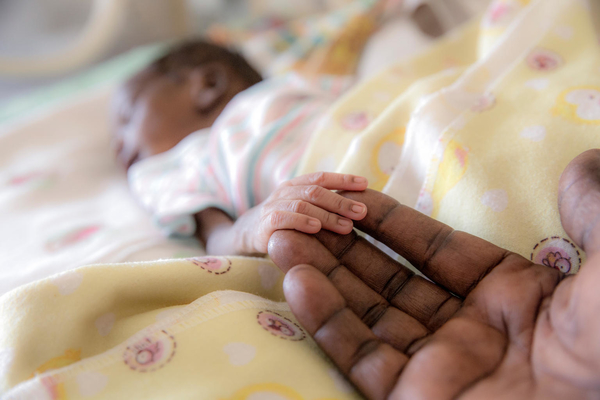

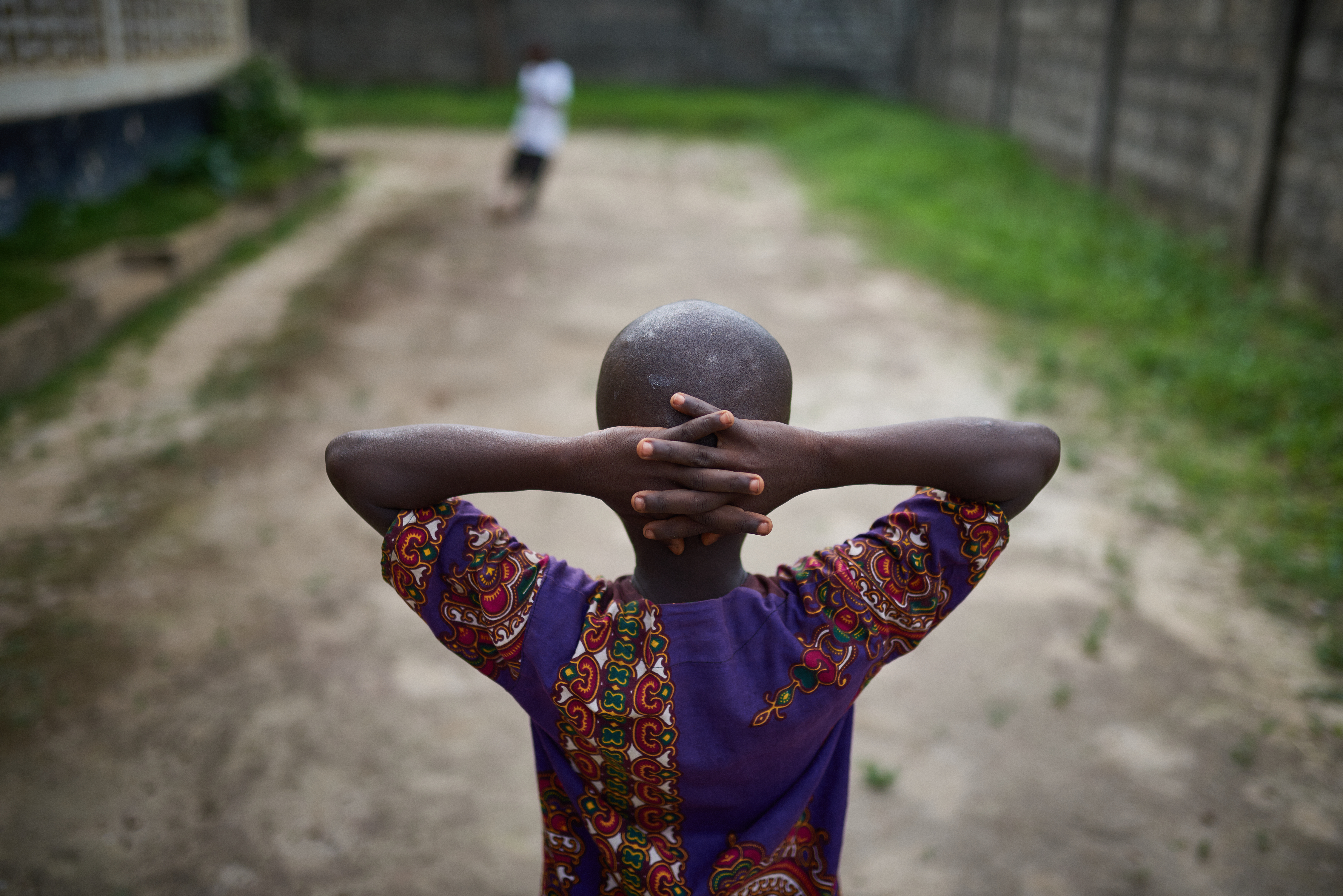
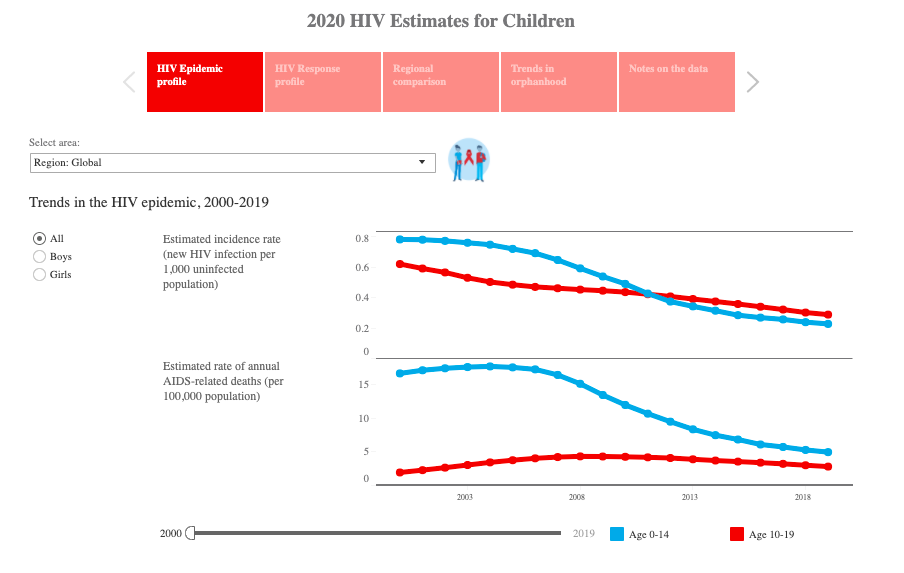
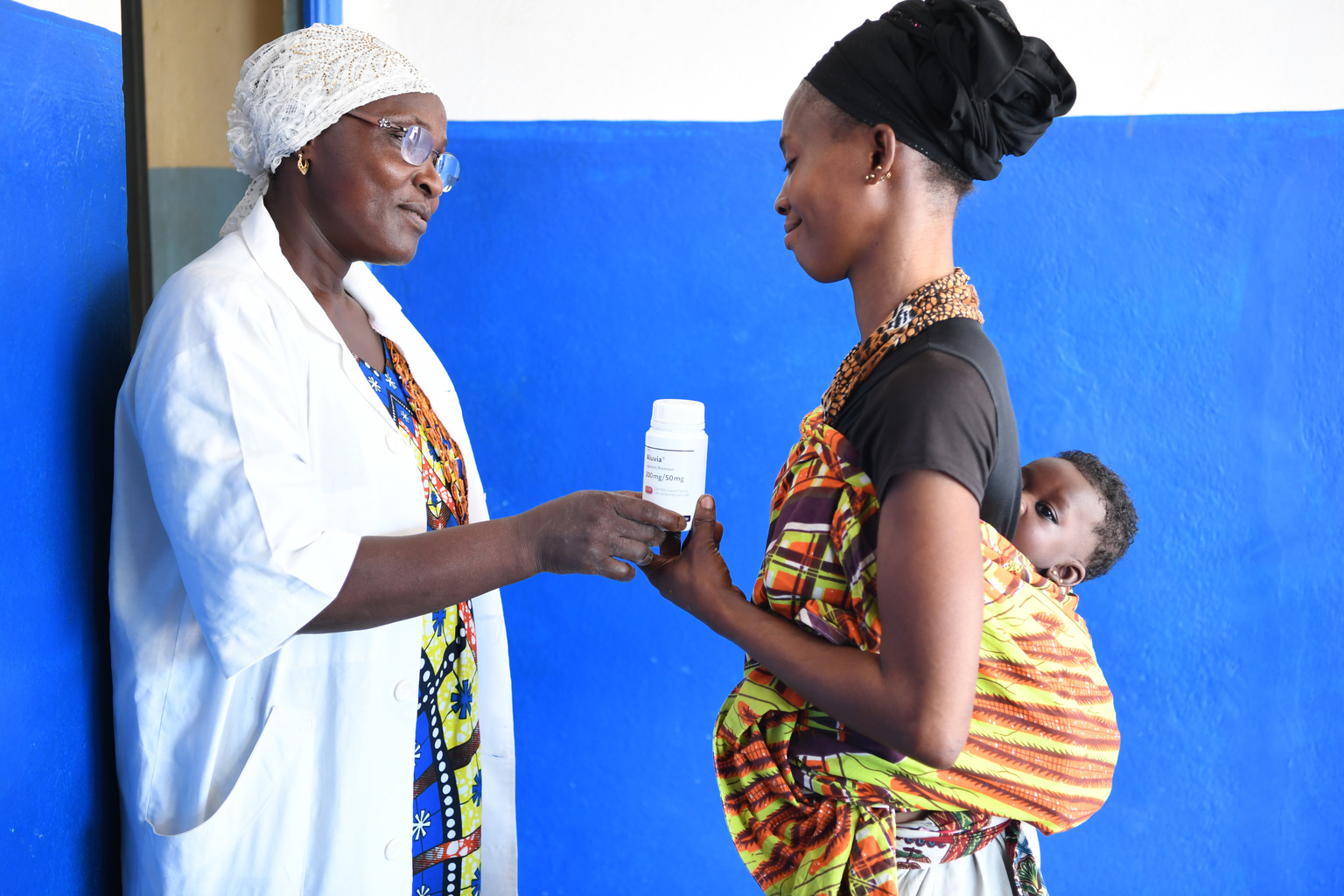
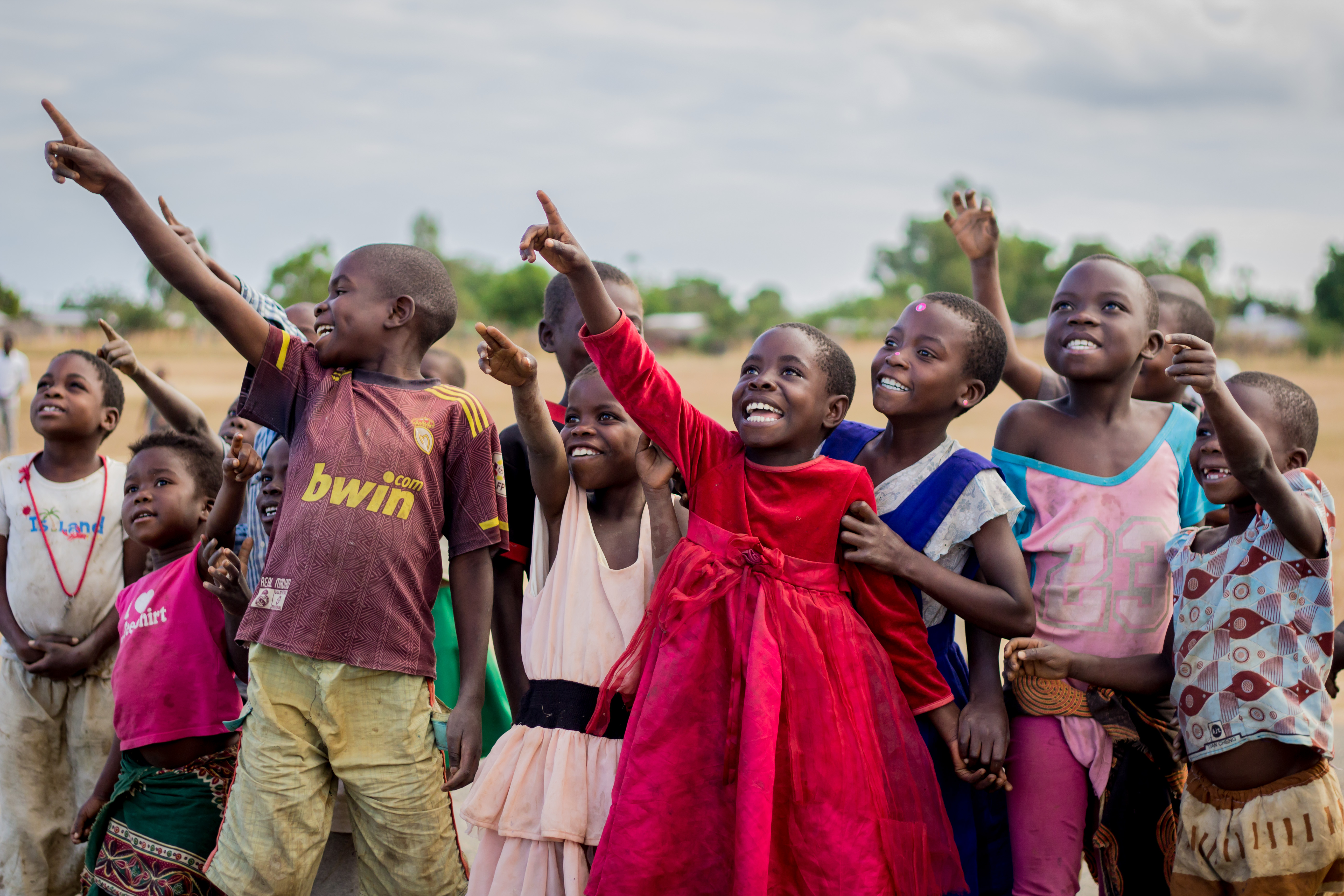
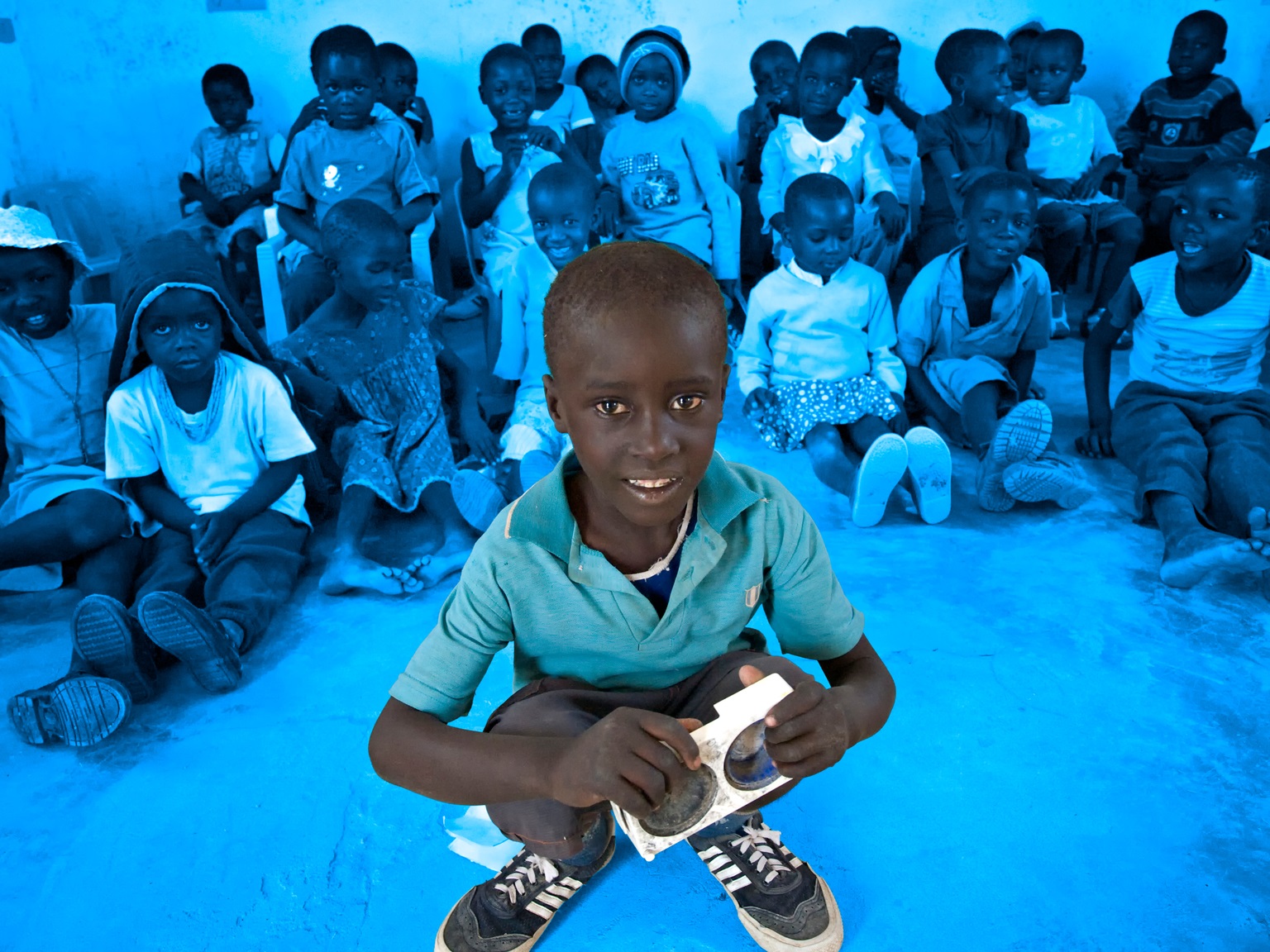

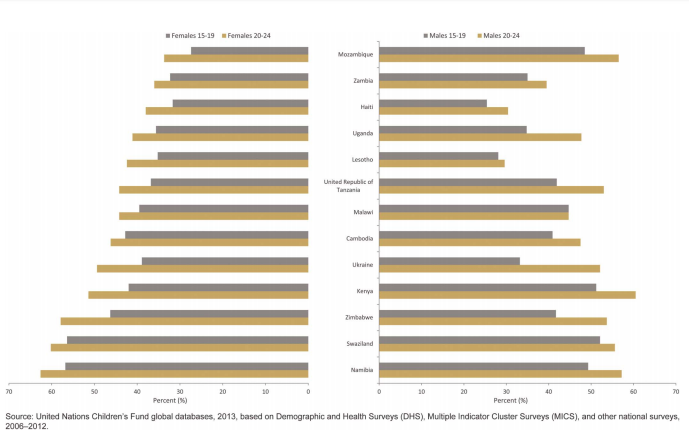
Data sources + methodology
Global AIDS monitoring 2020
In order to monitor the HIV response and progress towards achieving global goals, countries submit national and subnational data on a host of indicators to the Global AIDS Monitoring (GAM) system. Annual submissions are reviewed and validated. Data consist of programmatic data for HIV prevention, testing and treatment. Other indicators require data from population-based surveys and surveys focused on key populations at risk of HIV infection.
For more information, click here.
UNAIDS Estimates and Spectrum’s AIDS Impact Model
Each year countries update their AIDS Impact Model in Avenir Health’s Spectrum software to develop the latest estimates for the HIV epidemic. Supported by UNAIDS, WHO and UNICEF these estimates are used to inform programme and policy decisions for HIV epidemic response.
Useful links:
Methods for HIV modelling are developed by the UNAIDS Reference Group on Estimates, Modelling and Projections.
All available data on HIV estimates are available at aidsinfo.unaids.org.
Nationally representative surveys
Multiple Indicator Cluster Surveys (MICS), Demographic and Health Surveys (DHS), AIDS Indicator Surveys (AIS), Population-based HIV Impact Assessments (PHIA) reproductive health surveys, sexual behaviour surveys and other nationally representative surveys are currently used to collect data on HIV and AIDS.